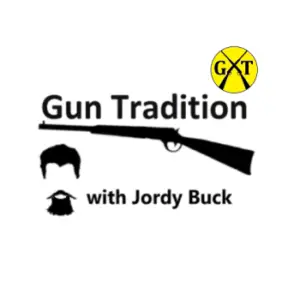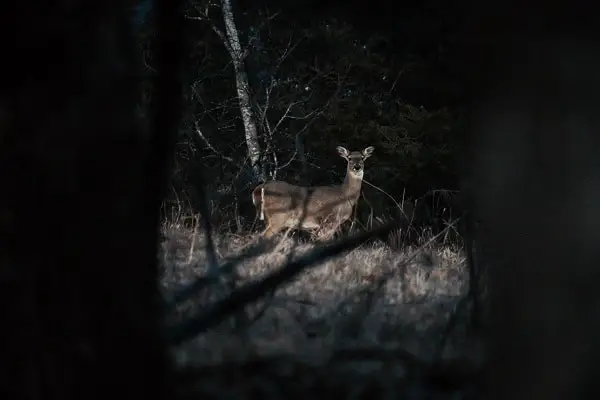I recently sold my .308 and both my Mosins. I know, blasphemy. Well now that money is coming around again, I’m looking at deer rifles and a new 243 has my eye.
The 243 is a reliable deer hunting cartridge. It’s a popular choice with low recoil and a wide choice of ammunition. A 243 will one-shot-kill a large deer at 200 yards. The best 234 bullets for deer are bullets are delayed expansion type between 100 and 115 grains.
So, let’s go over why the “experts” say what they do about the cartridge. For once, I agree with the general consensus.
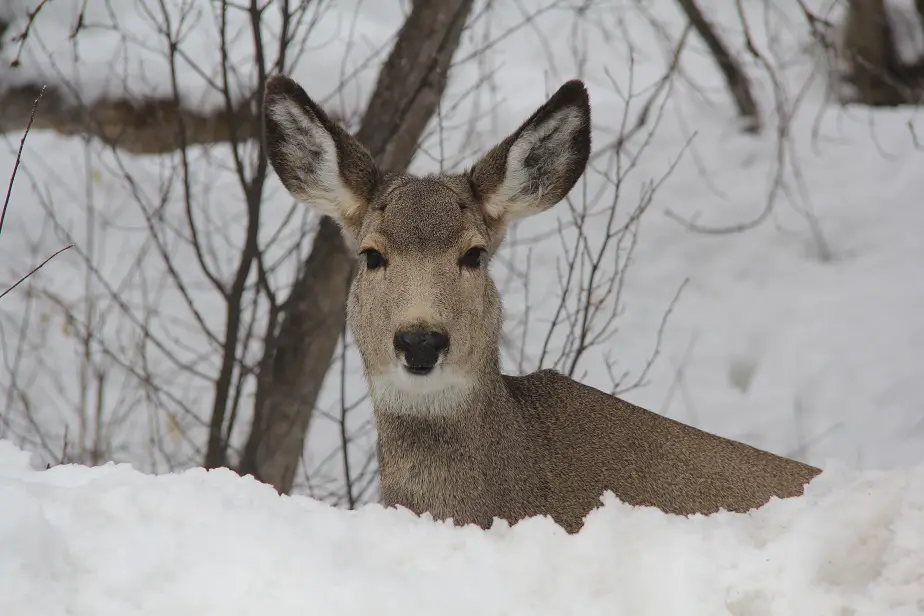
Why the 243 makes a Nice Deer Rifle
When it comes to guns, there are two primary questions asked for every caliber. “will it kill a deer?” and “will it kill a bear?” not surprising, a deer is the most sought-after game animal on the continent. Not so with bears, but hunter still dreams about them, even if they’ve never seen a live one.
Truthfully, the 243 has killed a good number of both. However, the number of deer downed is much greater than that of bears. It’s undoubtedly been used to take tens of thousands of deer in the country. I will put out that the mere fact that it has been done doesn’t mean it’s recommended.
I know a man who successfully harvested half a dozen consecutive whitetail deer with a Marlin model 60 .22 LR. It can be done, but don’t do it; it’s not going to work. Got that?
The 243 243 was developed I 1955, so it’s been around the block a time or two. It was based off the, new at the time, .308, and shares some of its features. It’s got a lot of room for gun powder, for a 24-caliber bullet. It is basically the 308’s little, energetic brother.
It throws a light weight bullet, but fast enough to have the energy it needs to knock down a 250-pound deer. The average 100 grain 243 bullet has between 1100- and 1200-foot pounds of energy at 300 yards. That’s where the average .223 bullet is at 50 yards. and I argue that a 223 works for deer.
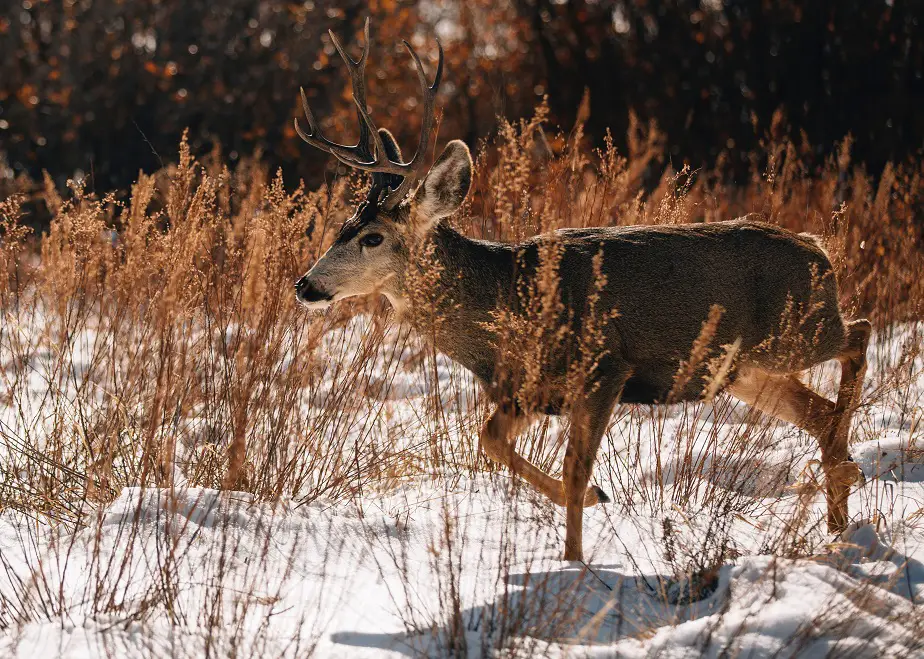
How much recoil does a .243 have?
One of the biggest advantages of this cartridge is its low recoil. How low? It depends on the specific rifle and ammunition, but a general working figure is 10 foot pounds of recoil. It’s within the realm of, but slightly lower than, the classic 30/30.
That’s 3 times more recoil than the standard ar15, but still significantly less recoil than the 308 and 30-06. If you are a shooter who thinks getting slapped around is not fun, the 243 is sure a viable option. The 243 is a much easier gun to handle than most rifles out there.
I was recently talking to a heavy-set fellow who was bragging about how his 10-year-old son was going to shoot his old, full sized 30-06 this season. I asked the man if he thought the 30-06 might have a lot of recoil for a 115-pound boy, and his response was “you don’t feel the recoil when you shoot the deer”.
That guy’s opinion is one of the failures of old gun culture. I recommended a smaller cartridge, so the boy could actually stand to practice with it. I was scoffed at and told he didn’t need practice, and that he hit the target with his first two shots so he’s good enough.
Folks, if you or your kid doesn’t regularly practice, you won’t be a good shot. If every time you practice, you get hurt, you won’t practice well. a rifle should be comfortable to the shooter, no matter the size of the shooter.
The 243 is the least recoiling of all the rifle rounds that are practical for an ethical one-shot kill on a deer. That being said, if a youngster can’t handle a 243, maybe they should wait until they’ve had their growth spurt. To put it simply, when a youth can handle a 243, they are old enough to go deer hunting.
A young lad may not want to shy away from hid daddy’s hunting rifle because ha wants to feel like a man, but chances are, he will develop a flinch or jerk due to the hard-hitting recoil. That’s just a fact. A young girl is more likely to have a bad first experience and not be wiling to do it again.
It can potentially be a good option for someone with a bad back or shoulder. Or, if you’re like me and have a flinching problem with bigger calibers, you can actually start to work on getting rid of it.
How flat-shooting is a .243?
The big factor of the 243 is its ridiculous speed. It will spit out the lighter weight bullets at over 4,000 feet per second. That’s what makes it such a step above the 223. Even the heaviest bullets are going over 3,000 fps. Just think, the 243 can shoot a bullet twice the weight of a 223, and at the same speed.
Speed, speed, speed. It’s all about speed. Well, that and a handful of other things. But speed is good. When dealing with ballistics and bullet trajectory, there is only one constant; gravity. Gravity pulls things to the ground at the same rate every time.
Think of it this way,
It doesn’t matter what caliber a bullet is, gravity pulls t down just as fast. Now, lets pretend just for a second that gravity pulls down at a rate of one foot a second. If a bullet went a mile in a second, it would be one foot low at a mile. If it went 2 miles in a second, it would be a foot low at 2 miles. See how it works?
Now, bullets don’t go that fast, but it’s a good illustration of the principle of gravity and flat shooting. the faster a bullet travels a given distance, the less it drops in that distance. Faster bullets will go 500 yards in less time, so it drops less at 500 yards.
The average 100 grain hunting bullet will drop about 40 inches at 500 yards when zeroed at 200 yards. Sounds like a lot, until you consider a 308 drops 50inches at 500 yards. At 400 yards the 243 drops 50 percent less than at 500. At 300 yards, it drops 30 percent less than at 400.
From zero to 250 yards, if you aim at the center of a 9-inch paper plate, you can cut paper with every shot. Up to 250 yards, the bullet is never more than 2 inches up or down with a 200 yard zero that’s fairly flat shooting. flat enough to hunt small varmints up to 230 yards. With no need to hold over.
For deer hunting, the best distance to zero a 243 at is 200 yards. when zeroed at 200, the bullet will have a PBR (Point Blank Range) of between 240 and 300 yards on a deer. of course, it depends on the individual bullets you use.
Point Blank Range is the furthest distance you can hit your target without compensating for bullet drop. You just point and shoot. No holdover and no guess work.
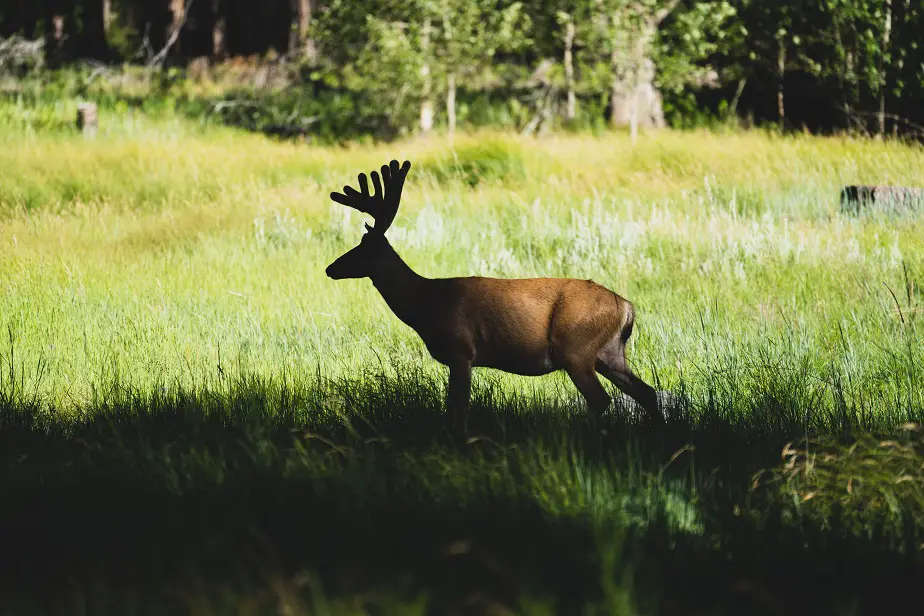
Is a .243 a good deer gun for youth?
Because of its light recoil, it’s often given to a youngen as a youth rifle. As long as the youth can make a good shot, it’s a great idea. The 24 doesn’t look or feel intimidating, so it’s not at all a bad choice for youngsters who are getting into hunting.
Starting a small kid out with a 308 or 270 will make it likely the child learns bad shooting habits, like I did. That’s a big part of why the U.S. military switched from the 308 to the 5.56. right away they noticed, people shot the smaller caliber much better.
Give a youth hunter or shooter a gun they will enjoy shooting and not worry about the recoil from multiple shots hurting their shoulder. There’s already enough to worry about when learning to shoot.
It’s the pinnacle of lightweight, medium game hunting calibers from the last century. According to one report, the average distance a deer ran after being shot with a 243 is 40 yards. the study also said deer run an average of 33 yards when shot with a .308. That’s a difference of seven yards or, nothing really.
What is the Best .243 Bullet for Deer?
The best bullets are the heavy ones. Heavy and delayed expansion. There are a lot of deer bullets in 243. Remington Core Lockted is the all-around favorite performer in .243 for Whitetail and Mule Deer.
Another popular option is the Hornady Superformance with a 95-grain bullet. Superformance is basically the +p (higher pressure) version. it’s faster and a little flatter shooting, but for under 300 yards, you won’t notice much difference over the cheaper Remington load.
I’ve got to say, that’s one thing that Ol’ Remington got right and kept right. the Core Lokted bullets by Remington are one of the most accurate hunting bullets you can find for almost any gun.
They are also one of the best consistently proven performing bullets for medium game. they have an amazing delayed expansion, bonded jacket design for both deep penetration and a large wound tract. Give them a try.
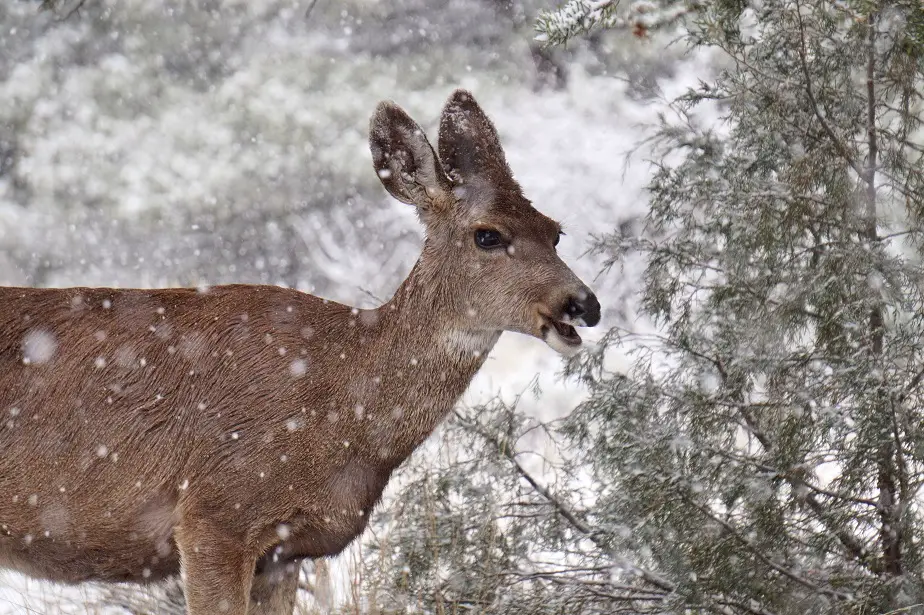
How Far will a .243 Kill a Deer?
The threshold of necessary power in a bullet to kill a deer is said to be approximately 1,000 foot pounds of energy. Every deer hunting load I’ve seen for the 243 has over 1,000 ft/lbs. at 500 yards. The more practical question is, how far can you make the perfect shot?
Most hunters can’t make a good shot much past 100 yards, where as the average good shot can go out to 200 yards. Still, there are many hunters who can and do take game much further. The .243 is not a long-range hunting rifle. it shouldn’t be used as one.
Yes, a good shot may do it at 500 yards, but the bullet has so much more tissue disrupting energy at 200 yards. if you want to make the most of every shot, get closer to the deer and wait for a good shot.
Best Rifle Platform for a .243
You’d be fine going with any type of rifle in .243. Bolt actions can be had cheap, and are the most popular. Lever actions are a fun gun for the .243, and they’re more accurate and more reliable than ever before. Henry makes a very pretty single shot that’s as accurate as you could want.
My personal favorite platform for the .243 is the AR10 rifle. The AR10 is a bigger version of the AR15. The .243 is just a dream to shoot in it. The recoil is nil. They handle superbly. They are awesome.
Unfortunately, the caliber never caught on with the AR crowd. They aren’t many manufacturers who make an AR in .243. The ones that do are a bit expensive. The ones I’ve seen are between one thousand and two thousand dollars. That’s what I’m currently saving up for.
